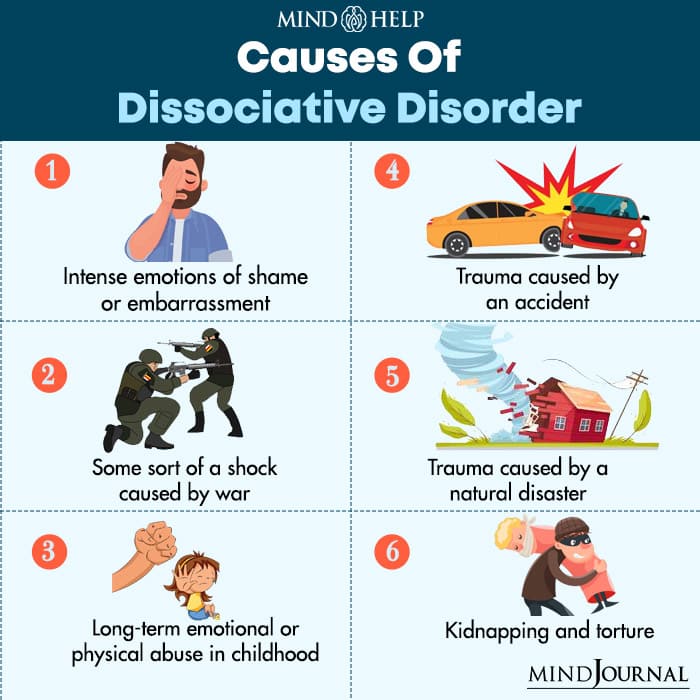A Quick Guide
One of the conditions in the category of dissociative disorders is Dissociative Fugue, formerly known as a Psychogenic Fugue. The Latin word for “flying” is where the term “fugue” originates. People who have Dissociative Fugue momentarily lose their sense of self and abruptly leave their homes or workplaces. They frequently lose their sense of identity and may even adopt new ones. People with this disorder don’t appear sick or behave strangely, therefore there are no apparent symptoms of their illness. In this article, we will discuss what dissociative fugue is along with its common symptoms, how it is diagnosed, and possible treatment options.
What is Dissociative Fugue?
Dissociative disorders are psychological illnesses characterized by interruptions or malfunctions in memory, conscious understanding, identity, and perception. Symptoms may appear when one or more of these processes are interfered with. These symptoms can affect a person’s general functioning, which includes relationships, social activities, and employment pursuits.
Estimates of the incidence of Dissociative Fugue in the overall population are as low as 0.2%. Adults experience Dissociative Fugue episodes more frequently than children do; symptoms typically start to show up in a person’s 20s or 30s, however, they occasionally arise in children as young as 8 years old.
Common Symptoms
It can be challenging to identify Dissociative Fugue in some people. There might not appear to be any signs from the outside. However, the following symptoms could suggest that someone is going through a Dissociative Fugue:
- An absence from work or other obligations
- Being dissociated from their emotions
- Confusion
- Difficulty identifying familiar faces
- Forgetting things about themselves and their life
- Roaming aimlessly
In extreme situations, a Dissociative Fugue patient may begin a new existence that is drastically different from their “old” life. For instance, someone could relocate, begin a new career, and form new relationships while forgetting or being unaware of their true identity and life. The individual will be able to recall specifics of their “old” life, loved ones, and identity once the fugue state has passed. However, people won’t recall what took place during the state. For instance, if they traveled, they wouldn’t recall how they got there.
Causes of Dissociative Fugue
An event that puts a person through a great deal of emotional stress can lead to it. It is thought that this condition is the person’s way of getting away from the stress that they are unable to handle otherwise.

A serious sexual trauma of some kind is a frequent cause of Dissociative Fugue. Other potential factors include:
- A natural disaster-related trauma
- Abduction
- Accident-related trauma
- Enduring physical or emotional abuse throughout childhood
- Intense embarrassment or feelings of shame
- Torture
- War-related trauma
The person may have experienced these events firsthand, or they may have witnessed them and been badly traumatized by what they saw. Additionally, it’s possible that a person’s genetic makeup predisposes them to Dissociative Fugue.
How is Dissociative Fugue diagnosed?
The condition is currently recognized as a sub-type of dissociative amnesia that is a dissociative disorder. The condition exhibits dissociative amnesia symptoms along with a state of deliberate or bewildered wandering.
Watch: [Dissociative Amnesia: Causes, Symptoms, Diagnosis and Treatment]
The following list includes all the additional subtypes of dissociative amnesia. There could be several types of amnesia in this disorder including:
- Continuous amnesia
- Generalized amnesia
- Localized amnesia
- Selective amnesia
- Systematized amnesia
Diagnostic Exclusions
If the fugue state is directly associated with any of the following conditions or circumstances, Dissociative Fugue will not be diagnosed:
- A medication-related condition
- Brain injury
- Consumption of alcohol or drugs
- Diagnosed delirium
- Diagnosed dementia
- Dissociative identity disorder
- Epilepsy diagnosis
- Taking psychotropic drugs
In extremely rare instances, people may even pretend to be experiencing a Dissociative Fugue for legal or other purposes.
Diagnosis Method
A medical and neurological evaluation would often be the first step in assessing a patient for this condition. In order to rule out conditions like epilepsy, a neuroimaging scan, such as an MRI of the brain, or further tests, like an electroencephalogram (EEG), would be carried out if needed. After physical causes had been ruled out, a psychiatrist or psychologist would utilize a number of assessment tools and perform an interview to determine whether a diagnosis of the fugue was the most appropriate reason for the symptoms.
What are the treatment options?
Treatment for Dissociative Fugues is to assist the patient in accepting the stress or trauma that led to the fugue. New coping mechanisms are also developed as part of treatment to stop further fugue episodes. The most effective course of action will probably combine a few of the following therapy modalities, depending on the patient and the degree of their symptoms:
Psychotherapy
The major therapy for dissociative disorders is Psychotherapy, a form of counseling. This therapy uses strategies meant to promote conflict resolution and deepen understanding of issues. A specific form of psychotherapy called Cognitive Behavioral Therapy aims to alter problematic thought patterns and the feelings and actions that follow.
Family therapy
This aids in educating the family about the condition and its causes as well as assisting family members in identifying signs of a relapse.
Creative therapies
The patient can discover and communicate their emotions and thoughts via the use of creative treatments such as art and music therapy.
Medication
Dissociative disorders themselves cannot be treated with any known medications. However, if a person with a dissociative illness also experiences anxiety or depression, they may be helped with a medication like an antidepressant, anti-anxiety, or antipsychotic.
Clinical hypnosis
Clinical hypnosis is a type of therapy that induces an altered state of consciousness (awareness) using a combination of deep relaxation, concentration, and focused attention. This enables people to explore ideas, emotions, and experiences that may have been buried in their conscious minds. The possibility of inducing false memories makes the use of hypnosis in the treatment of dissociative disorders debatable.
Is it possible to prevent Dissociative Fugue?
The condition may not be preventable, however, it may be beneficial to start treating affected individuals as soon as they start exhibiting symptoms. In addition, early diagnosis and treatment after a traumatic or emotionally upsetting event may help lower the chances of developing dissociative disorders.
How to Cope with Dissociative Fugue?
Since the majority of those who suffer from this condition are unaware of their illness, coping with it can be rather difficult. However, there are steps you can take to stop it from happening again if you’ve already experienced it:
- Find a creative outlet for your feelings, like painting or drawing
- Get the support of your family to help you recognize when you might be experiencing a fugue
- Get therapy to help you deal with the symptoms of a fugue
- Make sure to take your medication on a regular basis if your doctor has given it to treat your anxiety or depression
- Through treatment, address the underlying issue that triggered the fugue
- To manage your internal condition, try meditation or other strategies
- Try to lessen or get rid of anything that could set off a Dissociative Fugue
Outlook
The majority of Dissociative Fugues are short, lasting anywhere from a few hours to many months. The disorder frequently disappears on its own. Consequently, the outlook is favorable. Fugue episodes can continue if the underlying issue is not addressed with treatment. So that is one of the most important things to keep in mind.
We hope you found this article useful in learning more about Dissociative Fugue along with its symptoms, causes, prevalence, diagnosis, and treatment options.



 Healing Your Inner Child: A Short Guide
Healing Your Inner Child: A Short Guide  What You Need to Know About Trauma & its effects
What You Need to Know About Trauma & its effects  Dealing with a Narcissistic Parent: Strategies and Support
Dealing with a Narcissistic Parent: Strategies and Support  Understanding the MBTI Personality Types
Understanding the MBTI Personality Types  Understanding the Big Five Personality Traits
Understanding the Big Five Personality Traits  Body Image: what it entails and how it affects you
Body Image: what it entails and how it affects you